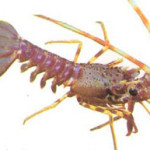The state gem of Hawaii is black coral, but hold on to your hula skirt, because this jewel’s no rock! Black coral actually comes from the skeletons of live animals. Related to jellyfish, black coral is made up of thousands of tiny polyps. The polyps shoot out poison-filled microscopic barbs to harpoon, kill and swallow plankton.
Black coral isn’t black. The name refers to the color of the skeletons, which are built from tough protein. The living colonies are yellow, green and orange. Black corals are colonial cnidarians in the order Antipatharia that are most closely related to gorgonians and stony corals. There are over 200 described species.
They are found throughout the world’s oceans, but are most common in tropical deep water habitats from 30- 80 m depth. Although the taxon is widespread, species have a patchy distribution and generally occur at a low abundance. All species are characterized by slow growth, delayed first reproduction, limited larval dispersal, and low rates of recruitment, low natural adult mortality, and long life.
Antipatharians have a rigid, erect skeleton that forms a branched, tree-like colony (bushy black coral) or a long, unbranched whip-like coil (wire coral). Colonies have numerous tiny polyps ringed with six non-retractile tentacles that are armed with stinging cells. Unlike many stony corals and gorgonians, colonies lack symbiotic algae (zooxanthellae) and must rely entirely on the capture of zooplankton or ingestion of suspended particulate matter.
When recording black coral only record individual colonies but use the notes section to comment on the size of the colonies.








Social Profiles